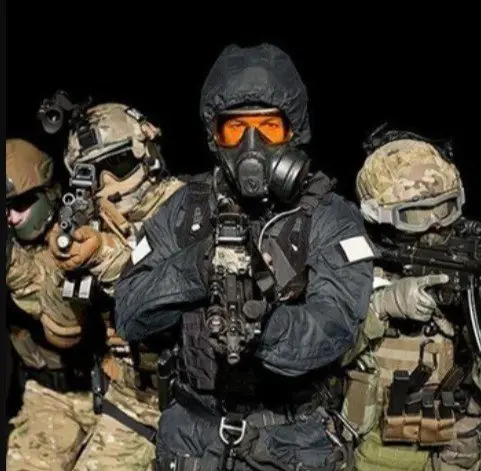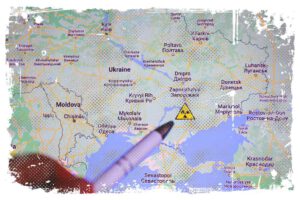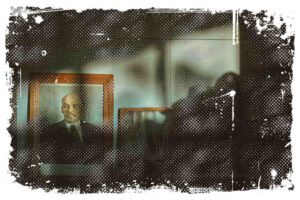The Polish GROM Special Forces Unit was created in 1990 and since that time it has gained extensive experience in carrying out combat missions in various parts of the world. The soldiers of this unit are fully prepared to handle special operations in any weather or location, thanks to the rigorous and demanding specialized training and daily practice they undergo. As a result of their experiences and lessons learned from past missions, the unit’s training system is constantly updated and modified to effectively respond to threats to both national and international security.

Introduction to GROM Special Forces
As you can imagine, becoming a part of the elite GROM Special Forces Unit is no easy feat. The selection process is multi-faceted and demanding, ensuring that only the best of the best make it through. Once accepted, soldiers embark on a grueling three-year journey of specialized basic training.
The GROM Military Unit sets high standards for its soldiers, requiring them to possess a high level of physical and intellectual fitness, as well as the ability to handle stress and fatigue. They must be able to work effectively as part of a team, take rational decisions in difficult situations, and adapt to changing environments.
But it’s not all about physical strength and fitness. The unit also puts a strong emphasis on teamwork and building trust among its members. It is also useful for them to have knowledge of foreign languages, a driver’s license, and the ability to swim.
↳ PRO TIP: Do you like traveling? Then before you buy any ticket or book an attraction, check if it's available in this worldwide Viator Database. You may save a lot of money and time. No need to thank me :)
GROM’s Role in Anti-Terrorism Operations
The soldiers of the GROM Military Unit are extensively trained to handle a wide range of special operations, including:
- MOOTW (Military Operations Other Than War) crisis response operations, which often involve evacuating people from areas of conflict or civil unrest.
- Counterterrorism AT, CT (Counterterrorism) operations, which involve physically combatting terrorists and conducting rescue operations.
- HR (Hostage Rescue) operations, which involve recapturing hostages.
- PR (Personnel Recovery) rescue operations, which involve evacuating personnel from hostile or unfriendly terrain.
- CSAR (Combat Search and Rescue) rescue operations, which involve conducting search and rescue operations in enemy territory.
- SR (Special Reconnaissance) operations, which involve conducting reconnaissance operations on enemy territory.
- DA (Direct Action) special operations, which involve carrying out sabotage and diversionary tactics on enemy territory.
- MS (Military Support) training operations, which involve training Polish and allied units during peacetime.
- UW (Unconventional Warfare) special operations, which involve a variety of unconventional actions such as infiltrating enemy troops and counter-diversion actions.
The details of the organization, number of soldiers, weapons, and equipment used by the GROM Military Unit are kept confidential. However, it’s known that the unit is composed of operators, grouped into six-man sections, and further combined into groups and teams. There is also operational support and logistical security subunits.
History of Special Forces in Poland
It might be interesting for you to know that the first special units in the Polish Army were diversionary units, later incorporated into the so-called “Wawelberg” Group.
During the night of May 2nd/3rd 1921, as part of the Operation “Bridges,” Polish saboteurs from these units successfully destroyed seven bridges on the most important railroads in Upper Silesia, damaged tracks on two others, and partially destroyed telecommunication between Upper Silesia and Germany.
These early Polish “special forces” played a crucial role in the success of the Third Silesian Uprising, which led to the incorporation of key economic areas into Poland. It’s also worth noting that the “Wawelbergers” were never deciphered by German intelligence or the intelligence services of other countries.
The Beginnings of GROM
When the Tadeusz Mazowiecki government came into power, in 1990, they made the decision to carry out a secret operation known as “Operation Bridge” in cooperation with the American CIA and the Israeli Mossad. This operation involved smuggling of around 40,000 Russian Jews from the USSR via Poland to Israel.
However, this operation drew the attention of Arab terrorists, who attacked Polish diplomats in Beirut and threatened further attacks. In light of these events, the head of the Department for the Protection of Foreign Ministry Posts, Lt. Col. Slawomir Petelicki, proposed the formation of a special military unit to strengthen the protection of Polish diplomatic missions.
This concept was approved by the Ministry of Interior, and the formation of JW GROM (JW 2305) unit began with cooperation from the American 1st SFOD-D (Delta Force), the British 22 Special Air Service Regiment (SAS) and the German GSG 9.
From the beginning, the GROM JW was formed as SMU (Special Missions Unit), and since October 1, 1999 it has been under the authority of the Ministry of Defense.
Keep in mind that GROM soldiers carried out their first special operation on June 27, 1997 (the capture of war criminal Slavko Dokmanović known as the “Butcher of Vukovar”) even before Poland’s accession to NATO.
GROM’s Training and Selection Process
Being selected for the GROM Military Unit is just the beginning of a long and challenging journey. The unit looks for individuals who are emotionally mature, able to work well in a team, and have a clear understanding of their goals. Candidates should have a strong desire for high-adrenaline work, be able to balance their work with family and education.
Intelligence level is also an important factor, as tests have shown that candidates with above-average intelligence levels have a stronger motivation and ability to focus under stress.
The tasks performed by GROM soldiers require intense thinking under stress and can cause extreme exhaustion, so the unit seeks individuals with a stable emotional state. They do not look for individuals who are overly intellectual, as they may struggle with integration and too much of a “lone-wolf” mentality. That is why young conscript soldiers do not serve in units of this type in the world, but professional soldiers are trained for this type of operations.
If you are interested in exact GROM selection process, please read my other article I wrote about this specific subject.
Now, lets have a look into the training process. The GROM Military Unit’s training system focuses on three areas:
- Counter-terrorist land and naval operations, such as freeing hostages, protecting VIPs and facilities, and securing the activities of other military and non-military services.
- Special operations including reconnaissance, destructive actions in the enemy’s rear, elimination of potential personal and technical threats, and participation in the evacuation of the population are also a key component of the training program.
- Maritime counter-terrorism operations, specifically combating terrorism at the land/sea interface, on floating facilities and platforms. Additionally, GROM soldiers participate in additional training courses such as parachute, diving, high altitude, pyrotechnic and medical.
Training is a Demanding Process.
These special forces soldiers are constantly pushing themselves to be the best, and they do it in close collaboration with some of the top special units in NATO.
One of the things that sets the GROM apart is the diversity of training environments they operate in. They train on their own land and water training facilities in Poland, but they also frequently travel to other countries to train, especially the United States. They even train in challenging environments like the jungle, preparing for any situation they might encounter in the field.
The selection process for the GROM is intense, just like it was for the legendary Cichociemni (Silent Unseen) special forces unit of World War II. One of the core training courses for GROM soldiers is the SERE course, which stands for Survival, Evasion, Resistance, and Escape.
They are trained in three different tactics: Green, Blue and Black, each of them prepares them for different environments.

Green tactic training, which focuses on open terrain, prepares soldiers for organizing and setting up traps and ambushes, responding to fire, hand-to-hand combat, stealthy movement using camouflage, escaping ambushes, observation, infiltration, guiding air attacks, and deploying snipers. The training also covers methods of reaching the site of operations by air, including HALO and HAHO drops and rope descent from a helicopter. I will explain what HALO and HAHO is in the next paragraphs.
Blue tactics training, which focuses on water environments, prepares soldiers for the specifics of underwater and on-water operations, including patrolling, diving, and abseiling. The training also covers methods of reaching the site of operations by air or water, including the use of a helicopter and/or assault boats.
Black tactics training, which focuses on urban areas, prepares soldiers for the specifics of counter-terrorism operations in built-up areas, including indoors, vehicles, aircraft, buildings, streets, airports, and stations. A CQB team is used to fight terrorists in a threatened area, while a MOUNT team takes over and holds such an area.
The specialized basic training of a GROM soldier lasts three years.
GROM’s Achievements and Operations
The GROM unit has been involved in a number of high-profile missions throughout the years. Some examples include:
- In 1994, they participated in Operation Uphold Democracy in the Republic of Haiti, working alongside US special units.
- In the 1990s, they were deployed to the Balkans multiple times, including the apprehension of war criminal Slavko Dokmanović, known as the “Butcher of Vukovar” in Operation Little Flower.
- In 2002, they were sent to the Islamic State of Afghanistan, Bahrain, Kyrgyz Republic, Kuwait, and the Indian Ocean.
- From 2002-2003, they were involved in operations in the Persian Gulf, including the abduction of ships and the enforcement of the UN embargo on oil trade with Iraq.
- In 2003-2004, they participated in Operation Iraqi Freedom, capturing the KAAOT oil terminal in the port of Umm-Kashr (Basra) and the Mukarayin dam, as well as conducting special operations and searching for and neutralizing associates of Saddam Hussein and members of Al-Qaeda.
- From 2002-2004 and 2007-2013, they were deployed to Afghanistan for in-country operations, including the release of 20 hostages, the protection of Polish soldiers in Bagram, and the protection of VIPs.
- In 2021, GROM soldiers were sent to Afghanistan to perform evacuation of more than a thousand people, including VIPs, citizens of allied countries and citizens of Afghanistan cooperating with allies and international organizations, like Lithuania, Latvia, the Netherlands, the International Monetary Fund, the International Olympic Committee.
GROM’s Equipment and Weaponry
As we already learned, GROM soldiers operate in a variety of environments, including the forest (green tactics), urban areas (black tactics), and aquatic environments (blue tactics).
Their training, uniforms, equipment, and weaponry are specifically designed to operate effectively in these different environments. I need to explain that the black tactics training is not limited to operations in open urban environments, such as housing estates and infrastructure facilities. They also include operations in vehicles, buses, trains, planes, and subways, making them well prepared for any situation they may encounter on the field.
Equipment
The GROM soldiers are equipped with specialized gear that is chosen for the specific environment they will be operating in.
For forest tasks (green tactics), they are equipped with a uniform, hat, camouflage chimney sweep, boots with GORE-TEX membrane, belt with suspenders, multi-tool, and commando knives. In addition, they carry a backpack, jacket, sleeping pad, sleeping bag, cooking container, rations, communication equipment, navigation equipment, weapons, and specialized equipment.
For urban tasks (black tactics), they are equipped with overalls, gloves made of Nomex, specialized boots with thin soles, Pro-Tec protective helmet, anti-reflective goggles, a rope bag, a bulletproof assault-tactical vest, knee pads, arm pads, gun holster, and pockets for extra ammunition. They also carry night vision equipment, a combat knife, communication equipment, navigation equipment and armament.
For water tasks, the soldiers are equipped with a dry suit with hood and neoprene fabric gloves, MDB lifejacket, and JUNGLE tactical-military boots. They also carry a waterproof bag with specialized equipment, combat knife, flippers, OXY-NG2 or NG3 closed-circuit oxygen apparatus, communication equipment, navigation equipment and armament, including machine guns with lights, laser pointer, holographic sight, and small arms.
Weapons
The GROM soldiers are armed with an array of weapons that are selected and customized to suit the specific mission they are undertaking. It is, however, not known for sure what exact equipment they have on their special missions. From what I managed to find out on the web, they most likely have:
- For handguns, they primarily use Heckler & Koch USP self-revolving pistols, which come in several versions such as MP5A5, MP5KA4, MP-5SD, among others.
- For automatic guns, they use the HK416 and similar models, which are equipped with a variety of sights, including optical, laser, night vision, and flashlights, as well as laser target pointers.
- For long-range engagements, they use sniper rifles that are individually tailored to the sharpshooters, including the M21, XM21, Mauser 76 SR, Remington M700, Barrett M82, PSG 1 and SR 25, among others.
- For heavy firepower, they use multi-barrel machine guns, such as the M134D Dillon Aero Minigun and others.
- They also have access to mortars, grenade launchers, and recoilless guns (for destroying armored vehicles), such as the LRM vz. 99 ANTOS light commando mortar with fragmentation-destruction and thermobaric ammunition, RPG-75-TB recoilless thermobaric missile launchers and others.




